Classical Meitei names of the 7 groups of the Meitei race of Kangleipak in their respective 7 sacred colorsMeitei confederacy , or Meitei confederation,[ 1] [ 2] Meitei : yek salai ).[ 3] [ 4] [ 5] [ 6] [ 7] [ 8]
Prior to unification and formation of the "Meitei confederacy," these groups were independent kingdoms ruled by their own kings. The Mangang, defeated the other clans and the Ningthouja king became the supreme ruler. Initially, the name Meitei referred only to the Ningthouja, but by the 15th century, it had come to refer to all seven clans. Over time, the seven groups united to form one nation but remained separate social entities. Today, clans still play an important role in the social structure of Meitei civilisation , especially in determining marriage patterns, as Meitei people do not marry within the same clan.[ 9] [ 10] [ 11] [ 12]
Historical territories
Yek Salai
States
Romanisation
Note(s)
Mangang
ꯏꯝꯐꯥꯜ ꯀꯪꯂꯥ
Imphal Kangla
[ 13]
Luwang
ꯂꯨꯋꯥꯡꯁꯪꯕꯝ ꯀꯪꯂꯥ
Luwangsangbam Kangla
Khuman
ꯃꯌꯥꯡ ꯏꯝꯐꯥꯜ
Mayang Imphal
Angom
ꯀꯣꯡꯕ
Kongba
Moilang
ꯃꯣꯏꯔꯥꯡ ꯀꯪꯂꯥ
Moirang Kangla
Kha Nganpa
ꯋꯥꯡꯆꯤꯡ ꯁꯪꯒꯥꯏ ꯀꯪꯂꯥ
Wangching Sanggai Kangla
Chenglei
ꯋꯥꯡꯒꯣꯏ ꯀꯪꯂꯥ
Wangoi Kangla
Number of families
Romanisation
Number of families/surnames (according to N. Monihar[ 14]
Number of families/surnames (according to Khomdon Lisam[ 15]
Number of families/surnames (according to T.C. Hodson[ 16]
Number of families/surnames (according to Manipur Mirror)
Number of families/surnames (according to MASTEC)[ 17]
Ningthouja
256
234
115
254[ 18]
125
Luwang
105
93
56
106[ 19]
58
Khuman
176
199
103
204[ 20]
67
Angom
96
109
50
103[ 21]
62
Moilang
100
110
66
99[ 22]
67
Kha Nganpa
42
37
17
43[ 23]
21
Chenglei
62
45
41
65[ 24]
35
Traditional ancestors
Swords
Romanisation
Illustrations of the swords
Names of the swords
Romanisation
Maximum breadth (cm)[ 27]
Maximum length (cm)[ 27]
Note(s)
Mangang
ꯆꯛꯊꯥꯡ
Chak Thaang[ 18]
6.2
59.6
[ 28] [ 29]
Luwang
ꯇꯣꯟꯗꯨꯝꯕ
Tondumba[ 19]
5.7
58.7
Khuman
ꯇꯣꯟꯀꯛꯄ
Tonkakpa[ 20]
6.6
57.2
Angom
ꯄꯨꯀꯛ ꯊꯥꯡ
Pukak Thaang[ 21]
6.3
50.1
Moilang
ꯌꯦꯟꯕꯥ ꯃꯇꯣꯛ ꯁꯥꯕ
Yenbaa Matok Saaba/Matok Paanba[ 22]
7.2
54.2
Kha Nganpa
ꯂꯥꯏꯊꯥꯡ ꯆꯤꯅꯥꯏꯕ
Laithaang Chinaaiba[ 23]
5.9
58.6
Chenglei
ꯈꯨꯟꯊꯣꯡ ꯊꯥꯡ
Khunthong Thaang/Khunthok Laaithaang[ 24]
5.9
59.1
Classical elements
Yek salai
Sacred water
Sacred fire
Note(s)
Mangang
Water of Nungseng (Nungjeng)
7 flames of Meiyei Meithang
[ 18] [ 30] [ 31]
Luwang
Water of Lamphel
Flame of Khoiju
[ 19]
Khuman
Water of Pumlen
Flame of Meithang
[ 20]
Angom
Water of Kongba Meironbi
Flame of Meiba Chingba Mei
[ 21]
Moilang
Water of Loktak
3 flames of Meithang
[ 22]
Kha Nganpa
Water of Leitang/Takna Kha Puruk shoubi
Flame of Leikham Waimei
[ 23]
Sarang Leishangthem (Salang / Salai Leishangthem)
Water of Takna/Takyel
5 flames of Leikham Waimeithang
[ 24]
Totems
Romanisation
Sacred mythical creatures
Sacred plants
Sacred fishes
Sacred leaves
Sacred fruits
Sacred flowers
Sacred woods/timbers
Note(s)
Mangang
Urum
Saareng Angaangba/Ngaahei
Thamlaa/Changbilaa
Thamchet/Heijang/Heibi
Thambaal Angaangba
Sayi/Uyung
[ 18] [ 32] [ 33]
Luwang
Khok U
Saareng Luwaoba/Ngaamu
Laayaai
Kihom/Heiba
Mellei
Heiku/Upal
[ 19]
Khuman
Pungphai
Saareng Mureinaba/Ngaatin
Changbilaa/Kwaaklaa/Khaanglaa
Heibung/Heiku/Heibong
Leisang/Kwaaklei/Leikhaam
Chaokhong/Sayi/Waa
[ 20]
Angom
Tairel
Saareng Angouba/Ngaraa
Laarong/Leihoulaa
Heibong/Heiba
Tharo/Thambaal (Angouba)
Upal/Sayi
[ 21]
Moilang
Nauhing
Saareng Naapu
Khaanglaa
Heiyit
Yerum Lei/Laangthrei
Kuhi/Khanglaa/Tou
[ 22]
Kha Nganpa
Napu Nasen
Saareng Ngaangna Laangba
Leihoulaa/Laaronglaa
Heiba/Heibung
Haorei/Yerumlei/Mellei/Leisang
Ching Yensin
[ 23]
Chenglei
Naapi Singbi
Saareng Sangbaannana Laangba/Ngaaren
Changbilaa/Thamlaa
Heijang/Heibung/Heitup
Leisang/Leikham/Sangbrei
Nongleisang
[ 24]
Sacred colors
Yek Salai 7 Flag, representing the seven sacred colors of the seven groups
Sacred colours[ a]
Associated Meitei clans
Romanisation
Note(s)
Red[ 18]
ꯅꯤꯡꯊꯧꯖꯥ (ꯃꯉꯥꯡ)
Ningthouja (Mangang)
[ 34] [ 35]
Light blue/White[ 19]
ꯂꯨꯋꯥꯡ
Luwang
Black[ 20]
ꯈꯨꯃꯟ
Khuman
White/Yellow[ 21]
ꯑꯉꯣꯝ
Angom
Yellow/Dark Red[ 22]
ꯃꯣꯢꯔꯥꯡ ꯁꯂꯥꯢ (ꯃꯣꯢꯂꯥꯡ)
Moirang (Moilang)
Green (striped)/Sweet potato colour[ 23]
ꯈꯥ ꯉꯥꯟꯄ
Kha Nganpa
Green/Sky colour[ 24]
ꯁꯂꯥꯡ ꯂꯩꯁꯥꯡꯊꯦꯝ (ꯁꯂꯥꯏ ꯂꯩꯁꯥꯡꯊꯦꯝ)
Sarang Leishangthem (Salang / Salai Leishangthem)
Related pages
References
^ Variations exist based on different contexts as per different sources
^ Biswas, Prasenjit; Thomas, C. Joshua (2006). Peace in India's North-East: Meaning, Metaphor, and Method : Essays of Concern and Commitment ISBN 978-81-89233-48-8 . ^ Economic and Political Weekly. India: Sameeksha Trust, 2003. p. 2035
^ Prakash, Col Ved (2007). Encyclopaedia of North-East India ISBN 978-81-269-0705-2 . ^ Ghosal, Soma (2003). The Politics of Drugs and India's Northeast ISBN 978-81-7975-065-0 . ^ "The People - Manipur Science and Technology Council (MASTEC)" . mastec.nic.in . Retrieved 2024-10-27 .^ "The Evolution of The Meetei State By K Manikchand" . e-pao.net . Retrieved 2024-10-27 .^ "Evolution of Meitei Society" . www.ijaresm.com . Retrieved 2024-10-27 . The confederacy was formed by the union of seven clans viz; Ningthouja, Angom, Khuman, Luwang, Kha-nganba, Moirang and Sarang-Leishanthem... ^ "Chieftainship among Meiteis Mizos 5" . e-pao.net . Retrieved 2024-10-27 .^ Devi, Nunglekpam Premi (2018-04-14). A Glimpse of Manipuri Literary Works ^ North-East India: Interpreting the Sources of Its History. India: Indian Council of Historical Research, 2008. p. 145
^ Ghosh, Subir. Frontier travails : Northeast, the politics of a mess. India: MacMillan, 2001. p. 25
^ Journal of the Assam Research Society. India: Kāmarūpa Anusandhān Samiti, 2007. p. 106
^ a b Sanajaoba, Naorem (1988). Manipur, Past and Present: The Heritage and Ordeals of a Civilization ISBN 978-81-7099-853-2 . ^ Monihar, N. (2000). Sagei Salai Apoklon ^ "Who are the Indigenous People of Manipur Part 2 By Khomdon Lisam" . e-pao.net . Retrieved 2025-02-15 .^ Hodson, Thomas Callan. The Meitheis. India: D. Nutt, 1908.
^ "The People - Manipur Science and Technology Council (MASTEC)" . mastec.nic.in . Retrieved 2025-02-18 .^ a b c d e "MANGANG YEK SALAI – Manipur Mirror" . Retrieved 2025-02-16 .^ a b c d e "LUWANG SURNAME LIST – Manipur Mirror" . Retrieved 2025-02-16 .^ a b c d e "KHUMAN SURNAME LIST – Manipur Mirror" . Retrieved 2025-02-16 .^ a b c d e "ANGOM SURNAME LIST – Manipur Mirror" . Retrieved 2025-02-16 .^ a b c d e "MOIRANG SURNAME LIST – Manipur Mirror" . Retrieved 2025-02-16 .^ a b c d e "KHABA NGANBA SURNAME LIST – Manipur Mirror" . Retrieved 2025-02-16 .^ a b c d e "SALANG LEISHANGTHEM – Manipur Mirror" . Retrieved 2025-02-16 .^ Neelbir, Sairem (2004). Erat Thouram Thounirol Lairik ^ Devi, Lairenlakpam Bino (2002). The Lois of Manipur: Andro, Khurkhul, Phayeng and Sekmai ISBN 978-81-7099-849-5 . ^ a b "Singh N. A. , Bezbaruah D., Gourachandra M. / Antrocom Online Journal of Anthropology, vol. 18, n. 2a (2022) 349-356" (PDF) .^ Monihar, N. (2000). Sagei Salai Apoklon ^ Neelbir, Sairem (2004). Erat Thouram Thounirol Lairik ^ Monihar, N. (2000). Sagei Salai Apoklon ^ Neelbir, Sairem (2004). Erat Thouram Thounirol Lairik ^ Monihar, N. (2000). Sagei Salai Apoklon ^ Neelbir, Sairem (2004). Erat Thouram Thounirol Lairik ^ Monihar, N. (2000). Sagei Salai Apoklon ^ Neelbir, Sairem (2004). Erat Thouram Thounirol Lairik
Other websites
_of_ancient_Meitei_ethnicity_(Meetei_race)_of_Kangleipak_civilisation_(early_Manipur)%252C_in_the_traditional_Meetei_Mayek_script%252C_in_their_respective_7_sacred_colors.jpg)
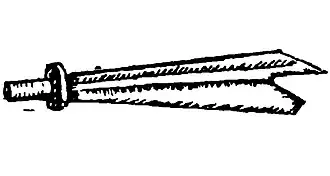

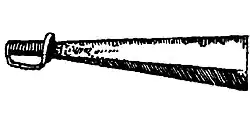
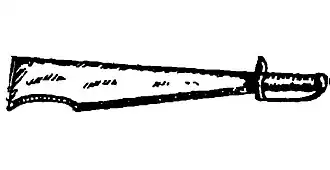
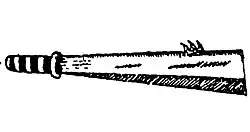

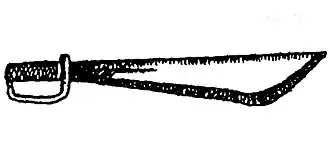
.jpg)
.jpg)
.jpg)
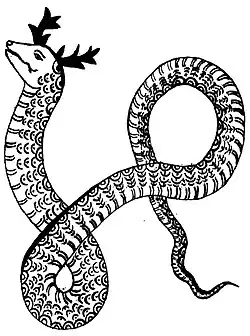
.jpg)
